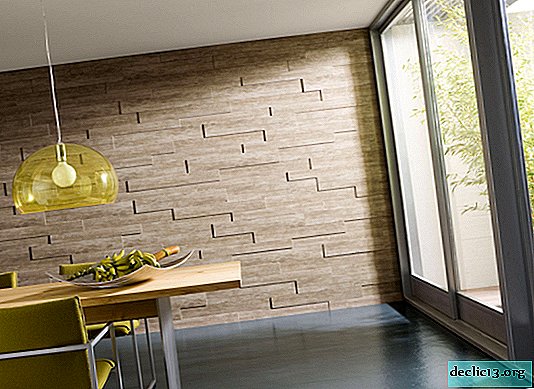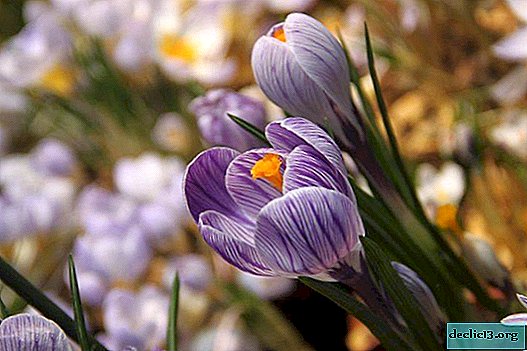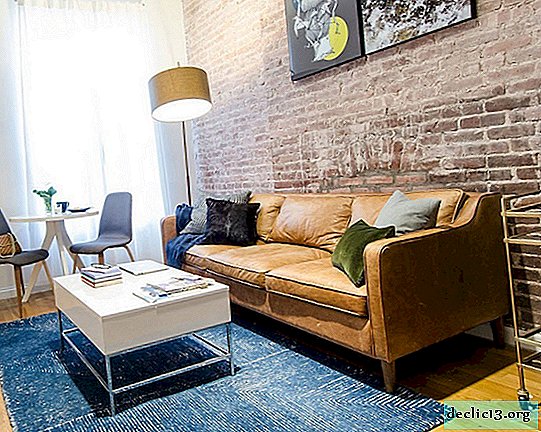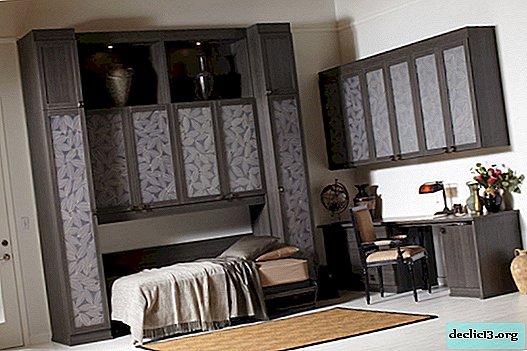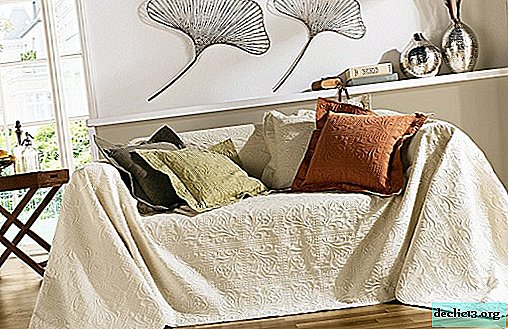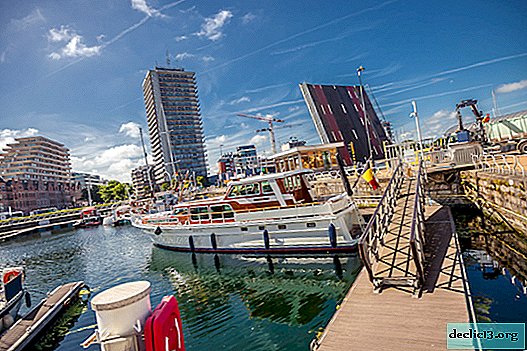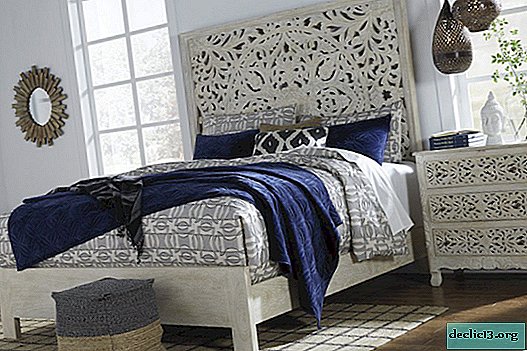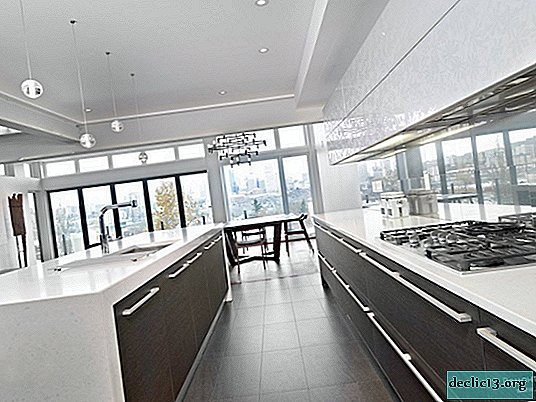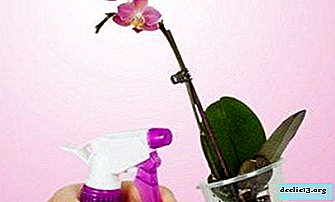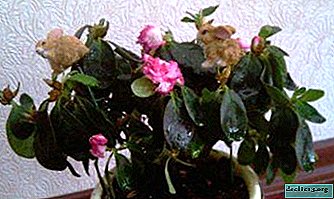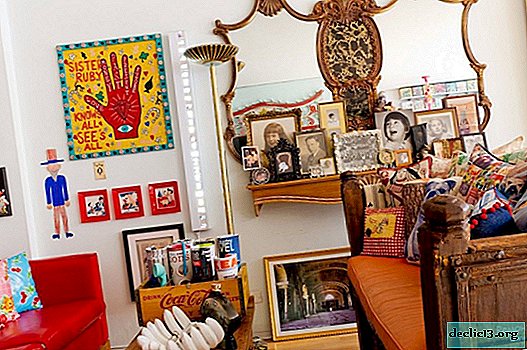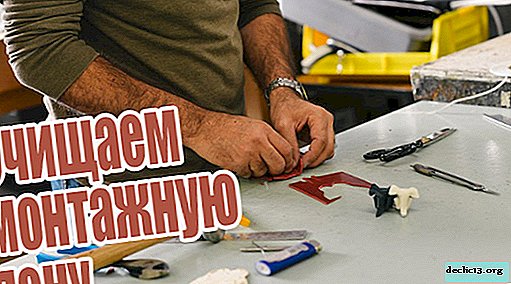The influence of style, texture and color on the interior
The basis for decorating any room is the style and the right choice of wall color, which is selected individually for a particular room. There are a number of styles that themselves determine the color palette of acceptable tones. For example, the hi-tech style implies combinations of pure colors in combination with various shades of gray; natural and pastel shades are typical for Provence. Also, colors are divided into "warm" and "cold." Warm are considered, ranging from lemon to orange, as well as red with all its shades. Cold colors include such as blue with shades, as well as turquoise, sea wave and purple also with its shades. There are only three neutral colors - these are white, black and gray.
Types of available interior styles
Classical
It implies two determining meanings: the first is a historical interpretation of the classical style, and the second combines several directions, such as Baroque, Rococo, Empire, classicism, etc. The latest version of the classic style "stuck" with interior designers, because, despite the differences in architectural forms, nevertheless, the trends have much in common in decorating, namely, they are united by proportionality, relative simplicity and naturalness. The interior, made in the style of the classics, has a decent and respectable appearance.
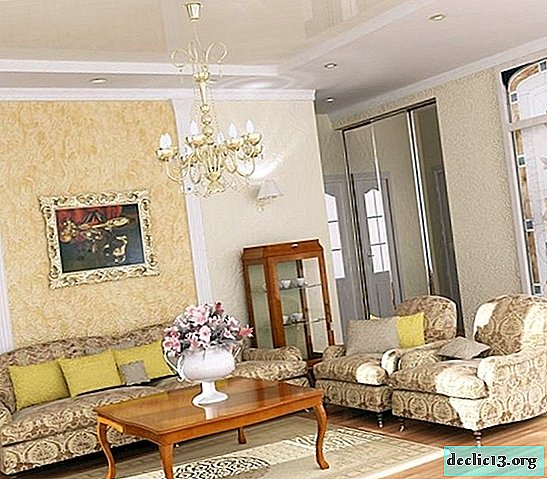
Romanesque
Rather strict and severe style, without any frills. It is characterized by such features as very thick walls, round or semicircular windows, and also implies wooden furniture with simple geometric shapes. On the walls - the presence of tapestries and carpets.

Gothic
It means saturated colors with gilding, in addition, the shine of stained glass, the abundance of all kinds of decorative elements, i.e. The style reflects medieval times with all their grandeur and grace.

Greek
It is distinguished by its simplicity and harmonies. It completely lacks elements of luxury, which are replaced by an abundance of marble, columns and vases. The color palette implies the predominance of yellow, blue and emerald shades.

Roman
He can be called the heir to the ancient Greek style. It is more solemn and magnificent, characterized by the presence of arches, domed arches, as well as various stylized figures of lions and eagles.

Renaissance
It is also called the "revival style." It is a combination of the best elements of the ancient Greek and Gothic styles. It implies the presence of carved massive furniture, columns and arches on the background of wooden walls, as well as all kinds of wall paintings and paintings.

Baroque
The prevalence of curved shapes, as well as arches. This style combines sophisticated decor with stucco molding that has an intertwined ornament - all this creates the impression of luxury and wealth.

Rococo
The style is characterized by the predominance of many decorative elements in the form of various curls. It creates the impression of sophistication, grace and wealth.

Empire
The main difference is the presence of straightforwardness and clarity of forms, but at the same time not devoid of the sameness and luxury of the paintings, as well as fabric draperies on the walls. This is a Napoleonic era style.

Eclecticism
It involves mixing different styles. Its origin in design took place in the 19th century. Over time, she proved her right to exist, moreover, she gained many fans and supporters. The main distinguishing feature of eclecticism is the use of special techniques in interior design, which allow you to combine different styles and synthesize them into one. This style is aimed at those who prefer a combination in the interior of different styles and eras, or simply for people living together, but having different preferences regarding the style of the interior.

Ethnic style
It implies pronounced ethnic directions: Chinese, Japanese, Mexican, Egyptian, Indonesian, Country, etc.

Egyptian
Very mysterious and original, able to give the interior an extraordinary charm and originality. Includes the presence of ethnic notes in the form of figurines or cuneiform writing. Regarding the color scheme - mainly yellow, green, blue and black shades.

Swedish
He is Scandinavian - it is a universal style, which is characterized by qualities such as lightness, sophistication and comfort. Gives the interior a feeling of freshness due to the predominance of light colors.

English country style
It implies the widespread use of floral motifs using natural colors. The main difference is the connection with nature.

Indonesian style
It combines oriental luxury and European pragmatism, being a striking example of eclecticism. Includes the presence of arches, as well as geometric patterns on a dark wood and stylized images of animals on fabrics. Regarding color - a clear predominance of saturated red shades.

Tuscan style
It features marble floors, stone arches, wooden furniture and spacious rooms. The color palette implies the use of gold, terracotta, as well as brick and ocher, however, certain elements allow a blue or green tone.

Moroccan
It includes a common form of eclecticism and a peculiar ethnic style, representing a combination of European and traditional African decor elements. This style and influence of Greek as well as Roman cultures are not without.

Country
It is a modern ethnic style. A distinctive feature is maximum closeness to nature, simplicity and extraordinary comfort. The style managed to win many fans from different countries.

Modern
Modern style, distinguished by asymmetry and non-standard smooth forms, i.e. courage of ideas. The interior uses floral motifs. Most often, colors such as pink, blue and green are used for the walls, and quite gentle shades are used.

Fusion
The main difference between this style is the contrast on which everything is based. Its unexpected combination of home furnishings creates a sense of experiment. Absolutely does not accept any rules.

Vanguard
It is distinguished by the use of the latest finishing materials, as well as the presence of large forms. The color palette implies contrast using pure colors.

Loft
It does not contain any partitions, it implies rooms with high ceilings with the presence of stone walls. The material used is wood and chrome.

Minimalism
The name of the style speaks for itself - a minimum of decor. It includes laconic shapes and modern materials such as steel, aluminum and frosted glass.

Retro
The main elements of this style are visual images, as well as trends of different generations. It is very bright, interesting and bold.

Choosing this or that style, you can emphasize your individuality, because it is he who in the interior design has a unique and inherent only color. Style sets the tone and dictates the proportions of combinations of various interior items. Let's get acquainted with its types:
Types of wall decoration
Wall decoration involves several types:
Color combination
Perhaps it is the simplest and most common technique in the field of placement of accents in the room, as well as in terms of its zoning. Using a combination of colors in a certain way, you can achieve the effect of visual expansion of space. This is achieved by painting one wall or even a separate part of it in a contrasting color. In this case, a wall of a different color will become an excellent background for existing interior items, thus highlighting them and concentrating on them. In other words, if you need an emphasis, then play on contrasts - the most suitable way of decoration.

Wallpaper combination
A similar method with the difference that in this case the wallpaper is combined with a different pattern, but the same in texture. Nowadays, there are even ready-made wallpaper options thought out for combining. The chosen pattern should be oriented to the style of the interior of the room. If you wish, you can also make an accent by wallpapering not all the room, but partially.

Photowall-paper
A select way to decorate, providing a wide field of activity. By placing photographs with natural landscapes or plants on the walls, you can create a feeling of a “window” into the living natural world, thus, as if opening up space. Photo printing has almost unlimited possibilities, allowing you to reproduce anything in the interior. Among other things, on the photo wallpaper you can make an individual order.

Wall painting
Provides many possible options and creative fantasies. Any room is subject to painting, moreover, if you wish, you can even do it yourself, using any drawing or template you like. This is done in a well-known and simple way: first, with a simple pencil, a grid is applied to the wall, after which the drawing is already transferred. The main thing that needs to be observed is that the more complex the drawing, the finer the grid becomes for the most accurate transfer of the pattern. Any resistant paints are used for painting: acrylic, gouache, permanent markers, pigments, etc. The most spectacular is the use of phosphoric paints that give a pleasant soft backlight at night.

Frescoes
Perhaps the oldest decoration method used for centuries. Again, one wall or only one part of it can be used. Unlike the previous technique, this method of decoration is only possible for a professional and a master of his craft, as knowledge of the technology of applying frescoes is required, as well as the presence of the taste of a professional artist.

Painting on canvas
It is especially recommended for large rooms with high ceilings. Great for styles like classic and baroque. This decor method involves mounting frames around the perimeter of the wall, followed by pulling on the canvas. The painting itself is made directly in the room and nothing else, because It is a big picture that can be easily damaged during installation.

The value of texture in interior decoration
We should not forget about such an important element as texture, which allows you to achieve extraordinary results in the art of interior decoration. There is a huge variety of ready-made options for applying textures, for example, you can display stripes on the wall. You can also achieve amazing success in achieving decorative effects using plaster and a roller with nozzles. In addition, the composition made in one color, but with the alternation of texture and smooth wall, looks unusually advantageous, thus creating a play of light and shadow. This effect is achieved by using ordinary construction tape. Even if it is just an alternation of textured and smooth stripes - the visual perception of the room will be completely different.
A bit about the psychology of colors
The fact that color affects the mood and emotional state of a person has long been no secret. Psychologists have developed a special color therapy in this regard, the properties of which are recommended to be taken into account when choosing a color scheme for interior decoration, as The room should be comfortable. We will examine in more detail what this or that color means:










- Red - is able to activate brain activity, increase pressure and overall tone of the body. It also increases the level of adrenaline, which is why it is strongly not recommended for people who are restless and anxious, while for everyone else it creates a feeling of warmth.
- Pink - have soothing properties, creating an atmosphere of peace and even tenderness. Ideal for women's interiors, especially for young women, as this color is primarily associated with youth, naivety and innocence.
- Brown - creates a feeling of trust and comfort, contributing to relaxation and peace. Associated with solid and mature people.
- Yellow (as well as orange) - is able to activate brain activity, attention, motility, and also stimulates the development of imagination. Particularly recommended for people prone to depression and stress, having a tonic-like effect on them. Color is associated with health, energy and activity, however, its oversaturation should not be allowed. Otherwise, it will cause irritation.
- Blue - encourages thoughtful thought, develops thought processes, as well as memory. In addition, it is able to remove overexcitation and aggression. Associated with serious and thoughtful people.
- Blue - has soothing as well as analgesic properties. In addition, it encourages the development of creative abilities.
- Green - is the color of health, trust, peace, and friendship. It has a calming effect, helps relieve headaches and stabilize blood pressure.
- Violet - is able to activate the respiratory and cardiovascular systems of the human body, and even increase its endurance. It is usually associated with dreamers and dreamers, however, this color should be avoided in large quantities, especially its deep shades, in order to avoid provoked depression.
Another little trick for creative people
There is another very easy, and most importantly, quick method of decorating the room. We are talking about vinyl stickers that are applied to the walls. The method of application is very simple: you just need to make markings with a simple pencil, thus marking the points on the wall at the places of gluing, and then press the stickers on them, which have an adhesive base on the inside. The range of various options for stickers is simply huge, up to sets of elements that allow you to create whole stories on the walls.
Based on the foregoing, we can summarize
Despite the huge variety of all kinds of details and nuances that must be taken into account when decorating the interior, you can look at the situation from different angles as well - this process is unusually exciting, to some extent resembles an exciting game in which you won’t get to another without completing one level . So here - wondering what specifically to choose, you should first get acquainted with all the existing options and methods of decorating the room. This will help to understand everything in detail and eventually realize any of your ideas.

